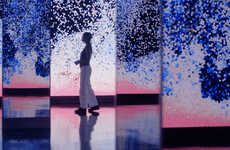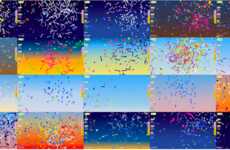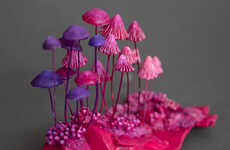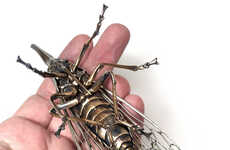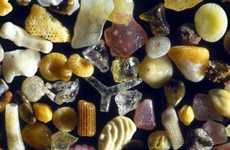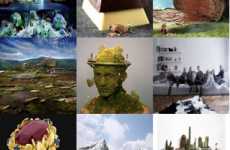
Microscopic Worlds The Size of a Dot on a Page
Tinkalicious — December 31, 2008 — Art & Design
References: michaeloliveri & totonko
You would be forgiven if you thought these images were of some apocalyptic landscape. They are in fact, images of various compounds taken with a scanning electron microscope, magnified hundreds of thousands of times, with the actual material no bigger than a dot on a page. They are the work of critically acclaimed artist, and current Professor of University of Georgia, Michael Oliveri, in collaboration with materials scientist, Pan Zhengwei. The images are created using materials such as zinc oxide, or combining zinc oxide and oxygen at 600 degrees centigrade, and capturing the resultant reactions which give the appearance of trees sprouting, mushrooms growing, or desolate landscapes. Other images capture the nanowire growths from materials such as gallium oxide and silicon.
Trend Themes
1. Nanoscopic Art - Opportunity for artists to experiment with creating art using a scanning electron microscope and nanoscopic materials.
2. Nanomaterial Imaging - Development of new imaging techniques and technologies for visualizing nanoscopic materials and structures.
3. Nanostructured Materials - Innovations in the production and use of materials with nano-sized structures and properties.
Industry Implications
1. Art and Design - Artists can incorporate nanoscopic materials into their work using scanning electron microscopes, and create art pieces that blend art and science.
2. Materials Science - Materials scientists can develop new imaging techniques and methods for visualizing the behavior of nanoscopic materials, and use these insights to create novel nanomaterials.
3. High-tech Manufacturing - Technological advances in nanomaterial production and processing can enable the development of new products and applications, such as advanced sensors, electronics, and energy storage devices.
1.4
Score
Popularity
Activity
Freshness


